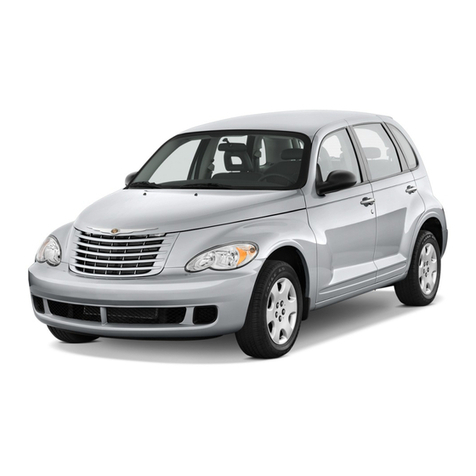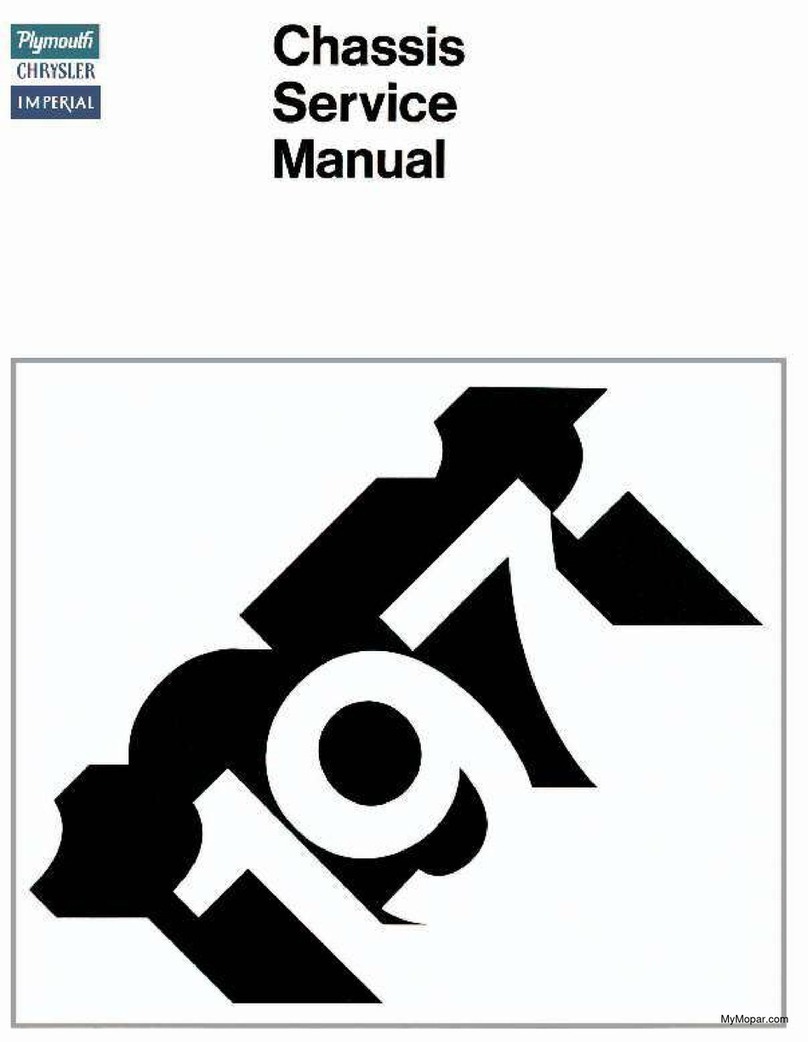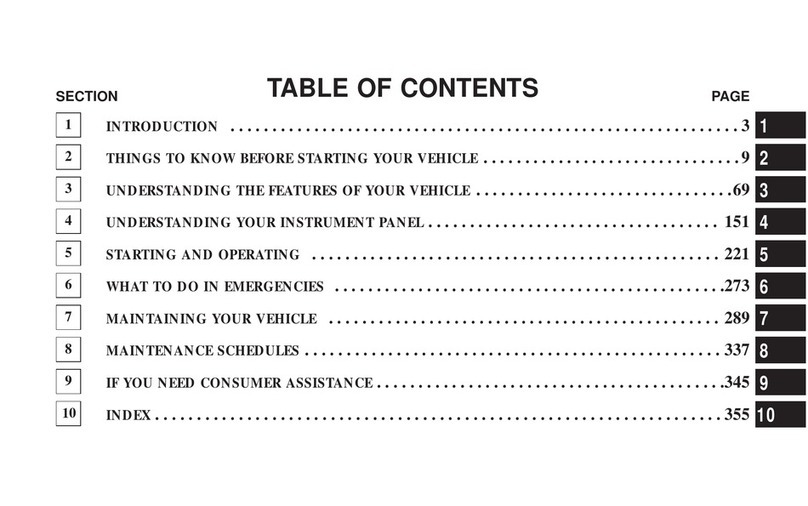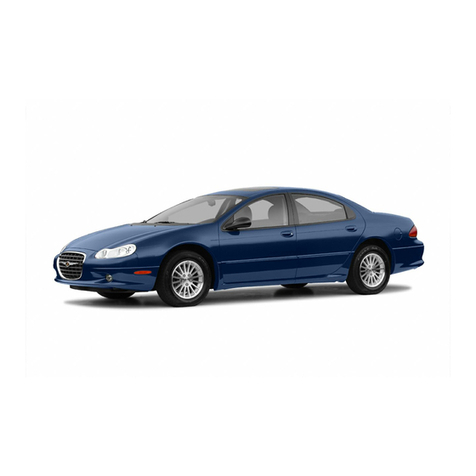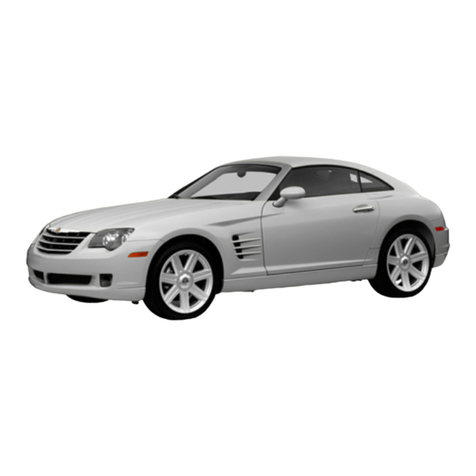
the pressure to the accumulators until the wheel is
no longer slipping. Once the wheel is no longer
slipping, the outlet valve is closed and the inlet
valve is opened to reapply pressure. If the wheel is
decelerating within its predetermined limits (prop-
er slip ratio), the inlet valve will close to hold the
pressure constant. On vehicles which are equipped
with a traction control system, there are four addi-
tional valves, two isolate the master cylinder and
two shuttle. During a traction control event the
brakes are applied to reduce wheel slippage.
Pump Motor Assembly: The pump motor as-
sembly provides the extra amount of fluid needed
during antilock braking. The pump is supplied fluid
that is released to the accumulators when the outlet
valve is opened during an antilock stop. The pump
is also used to drain the accumulator circuits after
the antilock stop is complete. The pump is operated
by an integral electric motor. This motor is con-
trolled by the CAB. The CAB may turn on the pump
motor when an antilock stop is detected. The pump
continues to run during the antilock stop and is
turned off after the stop is complete. Under some
conditions, the pump motor will run to drain the
accumulators during the next drive off. The CAB
monitors the pump motor operation internally.
3.3.4 ABS SWITCHES/SENSORS
Master Cylinder: The master cylinder is a stan-
dard tandem compensating port design forABS and
non ABS systems. Traction control vehicles use a
dual center port master cylinder. For proper trac-
tion control operation the standard master cylinder
must not be used.
A fluid level switch is located in the master
cylinder fluid reservoir. The switch closes when a
low fluid level is detected. The fluid level switch
turns on the brake warning indicator by grounding
the indicator circuit. This switch does not disable
the ABS system.
Wheel Speed Sensors and Tone Wheels: One
active wheel speed sensor (WSS) is located at each
wheel. The sensors use an electronic principle
known as magneto-resistive to help increase perfor-
mance, durability and low speed accuracy. The
sensors convert wheel speed into a small digital
signal. A toothed gear tone wheel serves as the
trigger mechanism for each sensor.
The CAB sends 12 volts to power an Integrated
Circuit (IC) in the sensor. The IC supplies a con-
stant 7 mA signal to the CAB. The relationship of
the tooth on the tone wheel to the permanent
magnet in the sensor, signals the IC of the sensor to
toggle a second 7 mA power supply on or off. The
output of the sensor, sent to the CAB, is a DC
voltage signal with changing voltage and current
levels. The CAB monitors the changing amperage
(digital signal) from each wheel speed sensor. The
resulting signal is interpreted by the CAB as the
wheel speed.
Because of internal circuitry, correct wheel
speed sensor function cannot be determined
by a continuity or resistance check through
the sensor.
Correct antilock system operation is dependent
on tone wheel speed signals from the wheel speed
sensors. The vehicle’s wheels and tires should all be
the same size and type to generate accurate signals.
In addition, the tires should be inflated to the
recommended pressure for optimum system opera-
tion. Variation in wheel and tire size or significant
variations in inflation pressure can produce inaccu-
rate wheel speed signals; however, the system will
continue to function when using the correct factory
mini-spare.
3.3.5 ABS INITIALIZATION
System initialization starts when the key is
turned to “run”. At this point, the CAB performs a
complete self-check of all electrical components in
the antilock systems.
Between 8-17 km/h (5-10 mph), a dynamic test is
performed. This will momentarily cycle the inlet
and outlet valves, check wheel speed sensor cir-
cuitry, and run the pump motor at 25 km/h (15
mph). The CAB will try to test the pump motor. If
the brake pedal is applied the test will be run at 40
km/h (24 mph) regardless of brake switch state. If,
during the dynamic test, the brake pedal is applied,
the driver may feel the test through brake pedal
pulsations. This is a normal condition.
If any component exhibits a trouble condition
during system initialization or dynamic check, the
CAB will illuminate theABS warning indicator and
TCS Indicator if equipped.
3.3.6 ABS DIAGNOSTIC MODE
To enter diagnostic mode, a vehicle speed must be
below 10 km/h (6 mph) and no ABS condition
present. If vehicle speed is not below 10 km/h
(6 mph), a “No Response” message could be dis-
played by the DRBIIIt. The following are charac-
teristics of diagnostic mode:
– The amber ABS warning indicator will blink
rapidly. If a hard trouble code, such as Battery
Voltage Out of Range code is present, the
indicator will be illuminated without blinking
until the trouble condition is cleared.
– Antilock operation is disabled.
– The HCU valves cannot be actuated when the
vehicle speed is above 8 km/h (5 mph). If valve
3
GENERAL INFORMATION
ProCarManuals.com




